Nintendo is home to some of the most iconic and beloved characters to have graced a games console, but its first ever mascot, Donkey Kong, is long overdue some proper respect.
That may seem a tricky proposition when the gorilla was originally designed as oafish and dumb, but he’s come a long way since debuting more than 40 years ago. He’s gone from titular antagonist to beat at the arcade, to a playable platforming hero in his own right from the SNES onwards. And while he’s had fewer headline outings than Mario, every time he’s come back it’s always with an inspired reinvention.
With the release of Donkey Kong Bananza, the biggest exclusive for the Nintendo Switch 2 to date, it’s a good time to look back at the key games that have defined and transformed this lovable ape over the years.
Donkey Kong (1981)
Looking back now, it’s amazing to think 1891’s Donkey Kong was originally meant to simply salvage thousands of unsold cabinets for failed Space Invaders clone Radar Scope. Nintendo then tried to license Popeye the sailor man to star in it. What we ended up with was a platformer all about climbing ladders and jumping over barrels, as you attempted to reach the top of a construction site to rescue Pauline from the great ape.
The game was an enormous success, becoming the highest-grossing arcade game in the US that year, and was responsible for giving Nintendo its first major foothold in the West – long before the NES would make it a dominant force. Not bad for a game that marked the debut for a plucky young designer called Shigeru Miyamoto. It was of course also the game that introduced the world to Mario, although here the dungaree-wearing hero was simply known as Jumpman.
Donkey Kong (1994)
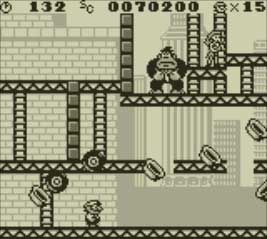
Besides home ports of the arcade original, the Donkey Kong franchise actually went dormant for a while after Donkey Kong 3 took things down the shooter route and replaced Mario with an ‘exterminator’ called Stanley. The Game Boy revival,
better referred to as Donkey Kong ’94, was more of a puzzle platformer, with over 100 levels for Mario to rescue Pauline from DK across. The gameplay would later inspire spiritual successor Mario vs Donkey Kong on the Game Boy Advance, which was eventually remastered for the original Nintendo Switch. It’s also significant for being the game that gave Donkey Kong the signature red necktie sporting his initials, and redesigned Pauline as a long-haired brunette in a red dress.
Donkey Kong Country (1994)
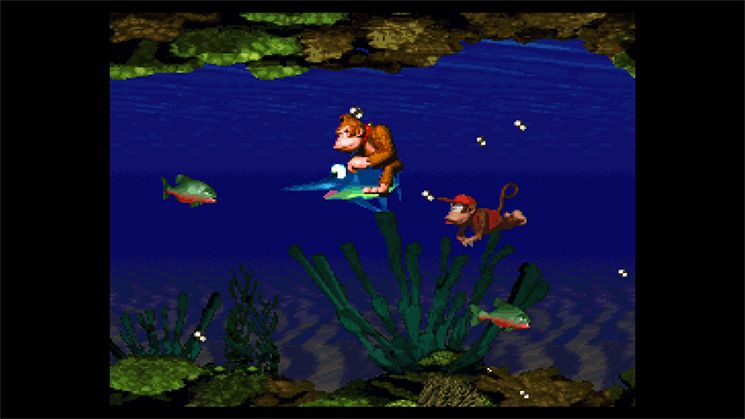
A far more significant Donkey Kong revival arrived later that year, not from Nintendo but the British studio Rare. Donkey Kong Country reinvented the ape as a playable platforming protagonist who, with his nephew Diddy Kong, sets out to recover stolen bananas from the evil King K.Rool and his Kremlings.
A much trickier platformer than the contemporary Mario games, here you’re relying on skill rather than power-ups. It’s especially fiendish if you want to nab all the collectibles.
What set it apart for many was its groundbreaking pre-rendered 3D models, keeping the ageing 16-bit SNES relevant as the real 3D gaming revolution was beginning elsewhere. David Wise’s charming score is meanwhile as catchy and memorable as Koji Kondo’s finest for Mario and Zelda.
Donkey Kong 64 (1999)
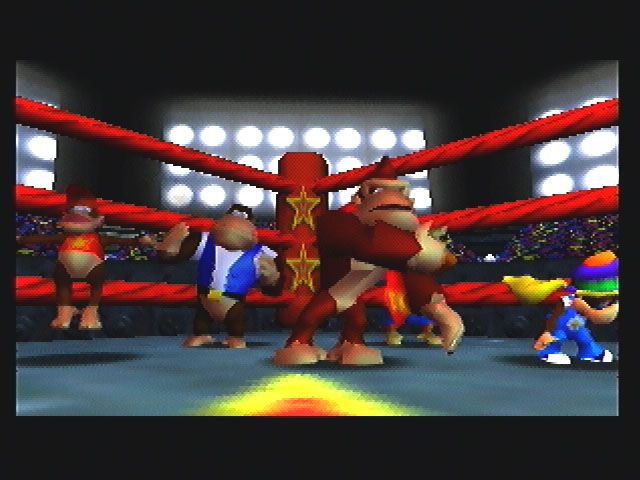
The Nintendo 64 was the de facto home of the 3D platformer, having gone stratospheric courtesy of the revolutionary Super Mario 64. It was only a matter of time as to when DK would make his proper 3D debut there. On paper, Donkey Kong 64 sounds like a winner: you get to play an ensemble of Kongs – DK, Diddy, Tiny, Lanky, and Chunky – with different abilities, and developer Rare had already proven its 3D chops with Banjo Kazooie.
Unfortunately, while a hit at the time, DK64 is largely looked back on as a tedious slog of a collectathon. The whopping 3,831 total collectibles earned it an entry in the Guiness World Records. It’s perhaps no surprise that subsequent DK games have opted to revert to side-scrolling platforming. But hey, at least it gave us the DK Rap.
Donkey Kong Jungle Beat (2004)
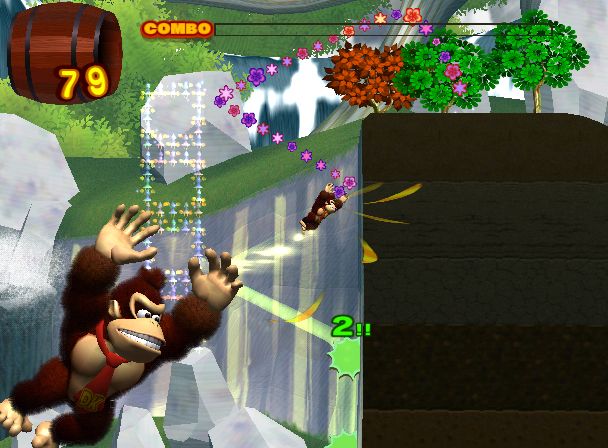
Jungle Beat is a niche GameCube release that sees you controlling DK with a pair of bongo drums, which were originally designed by Namco for its rhythm game spin-off Donkey Konga. But it’s still an important part of DK’s history. This was the first major game in the franchise to be developed by Nintendo in-house after Rare had been sold to Microsoft.
It controversially ditched a lot of the elements from Donkey Kong Country (that series wouldn’t be revived until 2010 by Retro Studios) including its characters and challenging platforming, though just getting your head around its quirky control system is already challenging enough. A curio for sure, but it’s better remembered as the debut of the Nintendo division that would go onto make Super Mario Galaxy.
Donkey Kong Bananza (2025)
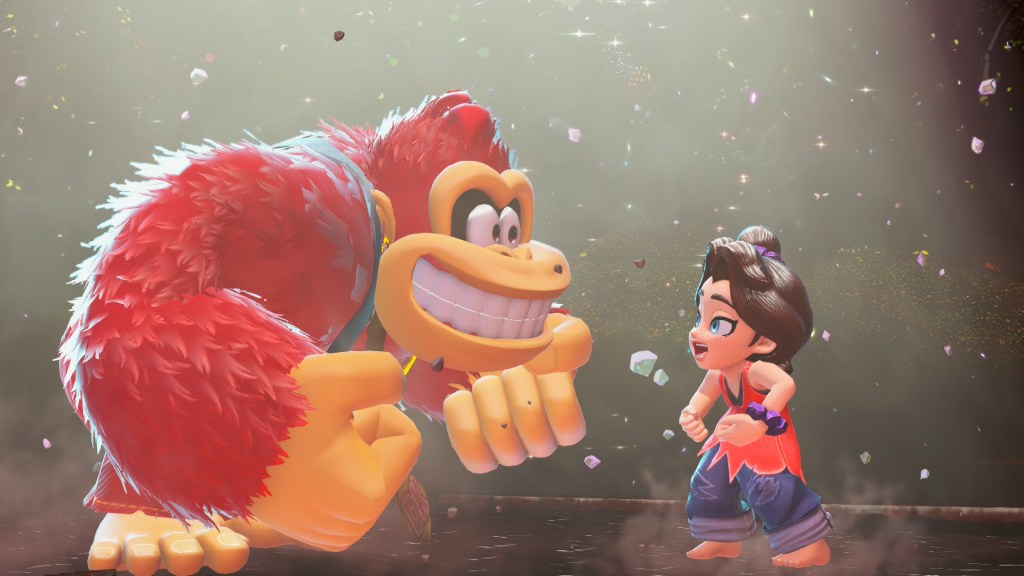
More than a quarter of a century later, DK has finally been given another 3D outing. And who better to right the wrongs of DK64 than the team behind Switch 1 masterpiece Super Mario Odyssey?
Bananza is still a 3D platformer but it’s less reliant on Country‘s twitch platforming and more on DK’s brawn. You can literally smash up terrain to dig up secrets or carve your own path. There’s still plenty to collect, in the form of Banandium Gems – think of them as edible crystal bananas that are much like Odyssey’s Power Moons.
What separates this from being a mere collectathon is the absolute delight of causing chaos as you explore each layer of this world in your journey towards the planet core. It’s not just sheer monkey mayhem, either, as you can also transform into other animals with other powers, like a speedy zebra or a flying ostrich (I know, ostrich don’t fly in real life, but let’s not interrogate that too deeply).
We’ve already seen the big guy’s redesign both in the Super Mario Bros. movie and Mario Kart World, but it’s in Bananza where you really appreciate just how expressive his silly face is. Bananza also pays tribute to the great ape’s history, so there’s not just cameos from the DKC family; it’s also got a few secret side-scrolling sequences, Jungle Beat‘s ability collect to nearby items with a clap, and the DK Rap playing when you have a rest.
The biggest reinvention though comes with Pauline, no longer a damsel but a pint-sized tween with a big singing voice that powers DK’s transformations. The pair’s relationship is surely a nod to Wreck-It Ralph and Vanellope, alongside a story with emotional and musical cues that wouldn’t feel out of place in a Disney movie. This gorilla’s never had a bigger outing and a bigger heart.
Read the full article here
